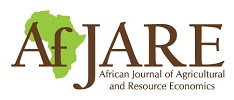Yield advantage and profitability of selected climate-smart technologies: Findings from demonstration plots in Northern Uganda
Climate-smart agriculture (CSA) is viewed as a potentially effective intervention to address low agricultural productivity in Sub-Saharan Africa (SSA), while strengthening farmers’ capacity to adapt to the effects of climate change.
